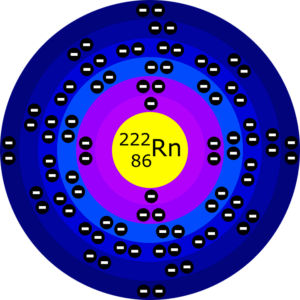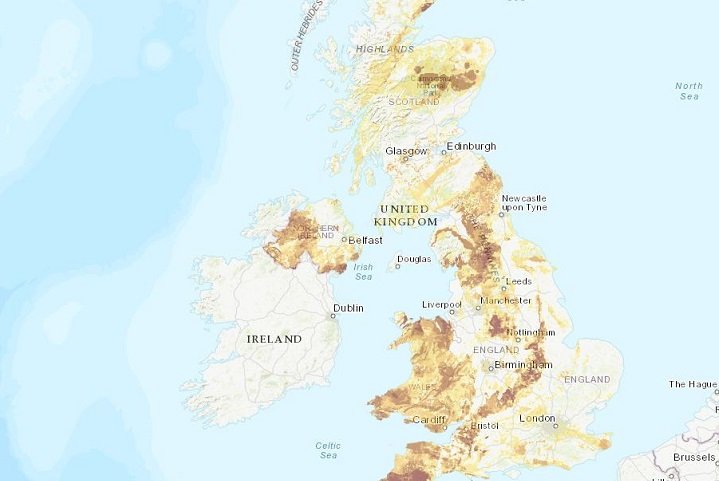David Gilmour, Business Manager for the Environment and Safety team at SOCOTEC, explains the importance of radon exposure in the workplace, and takes us through the process of monitoring and assessing levels and their impact on staff and visitors.
 In the UK, there is a naturally occurring element that not only increases the risk of lung cancer, but also poses the second greatest risk of the disease. Radon is responsible for the most significant component of background radiation dose that the UK population is exposed to, and due to its potentially hazardous nature, employers have a duty to protect their workforce and ensure they understand the level of potential exposure.
In the UK, there is a naturally occurring element that not only increases the risk of lung cancer, but also poses the second greatest risk of the disease. Radon is responsible for the most significant component of background radiation dose that the UK population is exposed to, and due to its potentially hazardous nature, employers have a duty to protect their workforce and ensure they understand the level of potential exposure.
With over 1,100 deaths a year from lung cancer related to radon gas, understanding the levels of potential radon exposure is critical. While The Health and Safety at Work Act 1974 is broader in its requirement of all employers to ensure the health and safety of employees and others who have access to the work environment, The Management of Health and Safety at Work Regulations 1999 specifically mention the assessment of risk from radon in certain circumstances. Where there is found to be an annual average level greater than 300 Bg/m3, The Ionising Radiations Regulations 2017 (IRR17) come into effect, requiring employers to take action to restrict resulting exposures.
What is radon?
Radon is a naturally occurring radioactive gas which is both colourless and odourless. It is formed by the radioactive decay of the small amounts of uranium that occur naturally in many rocks and soils.
Why is radon problematic?
Most radon breathed in by an individual is immediately exhaled and presents little radiological hazard. However, the decay products of radon are themselves radioactive. These decay products attach to atmospheric dust and water droplets, which can then be inhaled and lodge in the lungs and airways. Some of these decay products emit particularly hazardous radiation known as alpha particles, which cause significant damage to the sensitive cells in the lungs.
Radon areas

Certain geographical regions are more prone to radon gas than others due to geological differences, and the levels at which it enters the atmosphere and into workplaces depends on the geology of the specific area.
Public Health England (PHE) conducted radon measurements in more than 600,000 dwellings and workplaces to map out ‘Affected Areas’, and in 2010 a HSE report concluded that 48% of the average UK radiation dose came from radioactive radon gas in the ground. You can check here to see which areas are at greater risk.
Which types of workplace can be affected by radon?
All indoor workplaces including factories, offices, shops, classrooms, nursing homes, residential care homes and health centres can be affected by radon. Underground workplaces such as basements, cellars, mines, caves and utility industry service ducts can have significant levels of radon, particularly in radon ‘Affected Areas’.
What are the risks of radon?
Exposure to this type of radiation is a potential risk to health, as radiation is a form of energy that can cause damage in living tissues and increase the risk of lung cancer.
For employers, there is a legal duty to ensure that the working environment is a safe place for employees by conducting a radon gas risk assessment. This helps to determine the level of exposure and, where required, allows for the implementation of suitable control measures.
How do you monitor and assess for radon?
Radon is detectable and measurable using a recognised and specific radon monitoring device.
Due to the wide range of building designs, activities within these properties and their occupancy, a site-specific monitoring plan is required. This ensures that the assessment has the correct number of monitoring devices positioned in suitable and representative areas, providing accurate results on the potential exposure levels.
How long does radon monitoring take?
Typically, a single monitoring phase lasts for a three-month period. However, to ensure that seasonal variations are determined and results are trended, an assessment over a period of 12 months (four monitoring phases) is required. This ensures that results can be averaged over a year-long period to allow for a comparison against the annual average limit of 300 Bq/m3, as stated in the Ionising Radiation Regulations (IRR17).
What is the action level?
Where annual radon monitoring confirms average results exceeding 300 Bq/m3, the Ionising Radiation Regulations (IRR17) apply, which require employers to take action to limit exposures.
What protective measures can be taken against radon exposure?
When elevated radon levels have been confirmed, reduced exposure can be achieved by incorporating protective measures or via engineering means. These measures can include improved underfloor and indoor ventilation, sealing large gaps in floors and walls in contact with the ground, positive ventilation of occupied areas and the installation of radon sumps and extraction pipework.
When it is necessary to reduce radon levels by engineered means, the employer should ensure that levels in the area are re-measured immediately after installation in order to verify the effectiveness of the new control measures. Regular maintenance of the engineering controls, supported by occasional (e.g. annual) measurements, will ensure that the system remains effective.
If you are unaware of your current level of risk to radon exposure, an assessment should be undertaken. Where radon levels are satisfactory, the employer should keep a record of the results and review them after around 10 years, or in the case of significant changes to the workplace structure/use taking place.
Legislation requires employers to act if radon levels exceed the workplace threshold. Depending on how your assessment is carried out, you should receive straightforward advice on what to do next to manage and reduce high radon levels, as well as how to meet regulatory requirements.
Approaches to managing the risks associated Musculoskeletal disorders
In this episode of the Safety & Health Podcast, we hear from Matt Birtles, Principal Ergonomics Consultant at HSE’s Science and Research Centre, about the different approaches to managing the risks associated with Musculoskeletal disorders.
Matt, an ergonomics and human factors expert, shares his thoughts on why MSDs are important, the various prevalent rates across the UK, what you can do within your own organisation and the Risk Management process surrounding MSD’s.

 In the UK, there is a naturally occurring element that not only increases the risk of lung cancer, but also poses the second greatest risk of the disease. Radon is responsible for the most significant component of background radiation dose that the UK population is exposed to, and due to its potentially hazardous nature, employers have a duty to protect their workforce and ensure they understand the level of potential exposure.
In the UK, there is a naturally occurring element that not only increases the risk of lung cancer, but also poses the second greatest risk of the disease. Radon is responsible for the most significant component of background radiation dose that the UK population is exposed to, and due to its potentially hazardous nature, employers have a duty to protect their workforce and ensure they understand the level of potential exposure.
